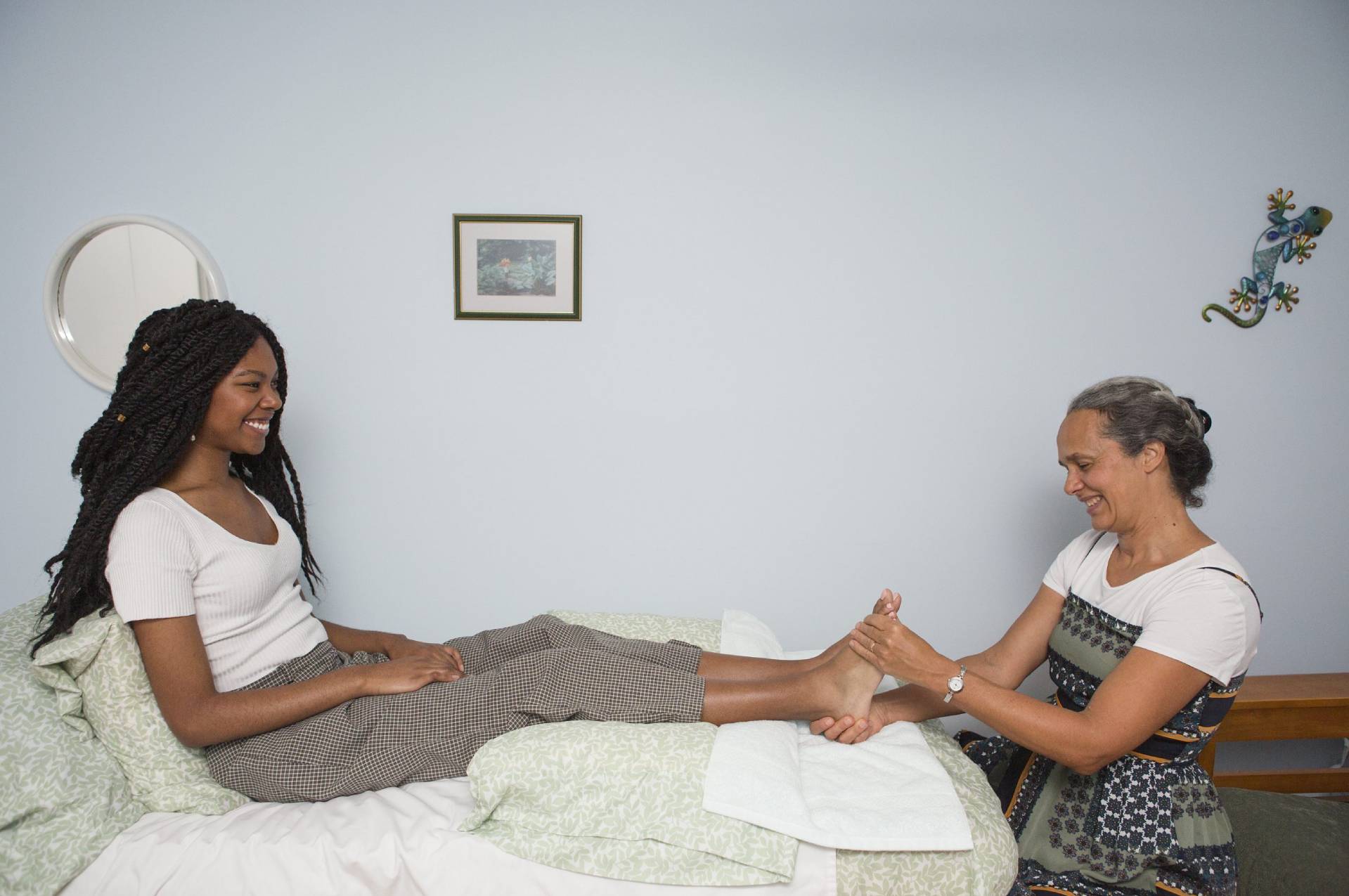Posture and Movement Therapy
Reclaim Your Body’s Wisdom with Posture and Movement Therapy (In-Person & Remote)
What is Posture and Movement Therapy?
Posture and Movement Therapy is Anna’s unique movement offering which combines mindful movement to release tension and improve alignment with exercises for flexiblity and strengthening. Along with movement, you benefit from manual therapy as well to make your transformation easier and quicker. Posture and Movement Therapy is a package including a comprehensive Posture & Movement Assessment, 1:1 sessions, group Somatic Groundwork classes, followed by a reassessment. A typical 1:1 session includes 15 minutes of manual therapy (CST & LDT), 15 minutes of Somatic Groundwork and 15 minutes of strength/flexibility training.
Benefits of Posture and Movement Therapy
Who Can Benefit from Posture and Movement Therapy?
Posture and Movement Therapy is suitable for people of all ages and fitness levels. It can be particularly beneficial for those experiencing:
- Chronic pain
- Stress and anxiety
- Limited mobility or flexibility
- Injuries or physical limitations
- Desire to improve posture and body awareness
How Does a Posture and Movement Therapy Session Work?
During a Posture and Movement Therapy session, Anna will use manual therapy to assist loosening tight muscles, teach self-help techniques to sit and stand with healthy posture, teach Somatic Groundwork basic techniques, and guide in strength and flexiblity exercises.
During a Somatic Groundwork session (group online or in-person class), Anna will guide you through gentle stretches, exercises, and breathing techniques tailored to your individual needs and abilities. You’ll be encouraged to focus on your body’s sensations, move slowly and with intention, and cultivate a sense of non-judgmental awareness.
Remote Posture and Movement Therapy Sessions
Anna also offers remote Posture and Movement Therapy sessions, providing personalized guidance and support through video calls. These sessions allow you to practice in the comfort of your own home, making Posture and Movement Therapy even more accessible.
"Our mission is to help you progress toward self-awareness and optimal health. We offer compassionate, intuitive care, treating the body, mind, and spirit as a unified whole."
Anna Crandlemire, Manual Therapist
Dress is a snug fitting top, and shorts so your alignment will be easier to see. It is best if you are well-rested and hydrated before your assessment.
Your session takes place in a quiet, private setting. Clients remain fully clothed. The session is performed with the client reclining on a massage table or in a reclining chair. For CST and Lymph Drainage, the practitioner stands or sits at various times during the session at the client’s head, middle torso or feet.
Experiences differ for each individual, and from session to session. You may deeply relax and even fall asleep at times. Other times you may want to talk, and the practitioner may lead you through a therapeutic dialogue process. You may recall hidden memories, relive events, and express emotions. Some clients may not be aware of many sensations in their body as the tissues relax and re-balance, while others will notice more.
You may become very relaxed and drift off to sleep during your session. The practitioner will ask for you to give feedback of which reflexes on your feet are tender or sensitive as she works on your feet. Some clients will have many tender reflexes, while others may only have one or two. You also may feel chilly and need a blanket as your body relaxes.
Somatic Groundwork requires a floor area large enough for you to lay down in an “X’ position. You will be guided through grounding, breathing and yielding into the floor, and then through movement patterns. You will spend part of the time on the floor, and also in mid-level and standing positions.
Response to manual therapy varies from individual to individual and condition to condition. The number of sessions needed varies widely – from just one up to three or more per week over the course of several weeks. I recommend starting with 3 to 5 CST or Reflexology sessions, spaced either a few days apart for acute conditions to a week apart. Once clients start feeling better, they often continue with monthly sessions as part of their health care program.
Some insurance providers cover Reflexology treatments. Craniosacral Therapy, Lymph Drainage Therapy and Posture & Movement Therapy are not covered. Receipts will be issued for all sessions, and can be claimed as medical expenses on your tax return.
Testimonials
From Our Blog
Stay informed and inspired with our latest articles on manual therapy, wellness, and self-care.



